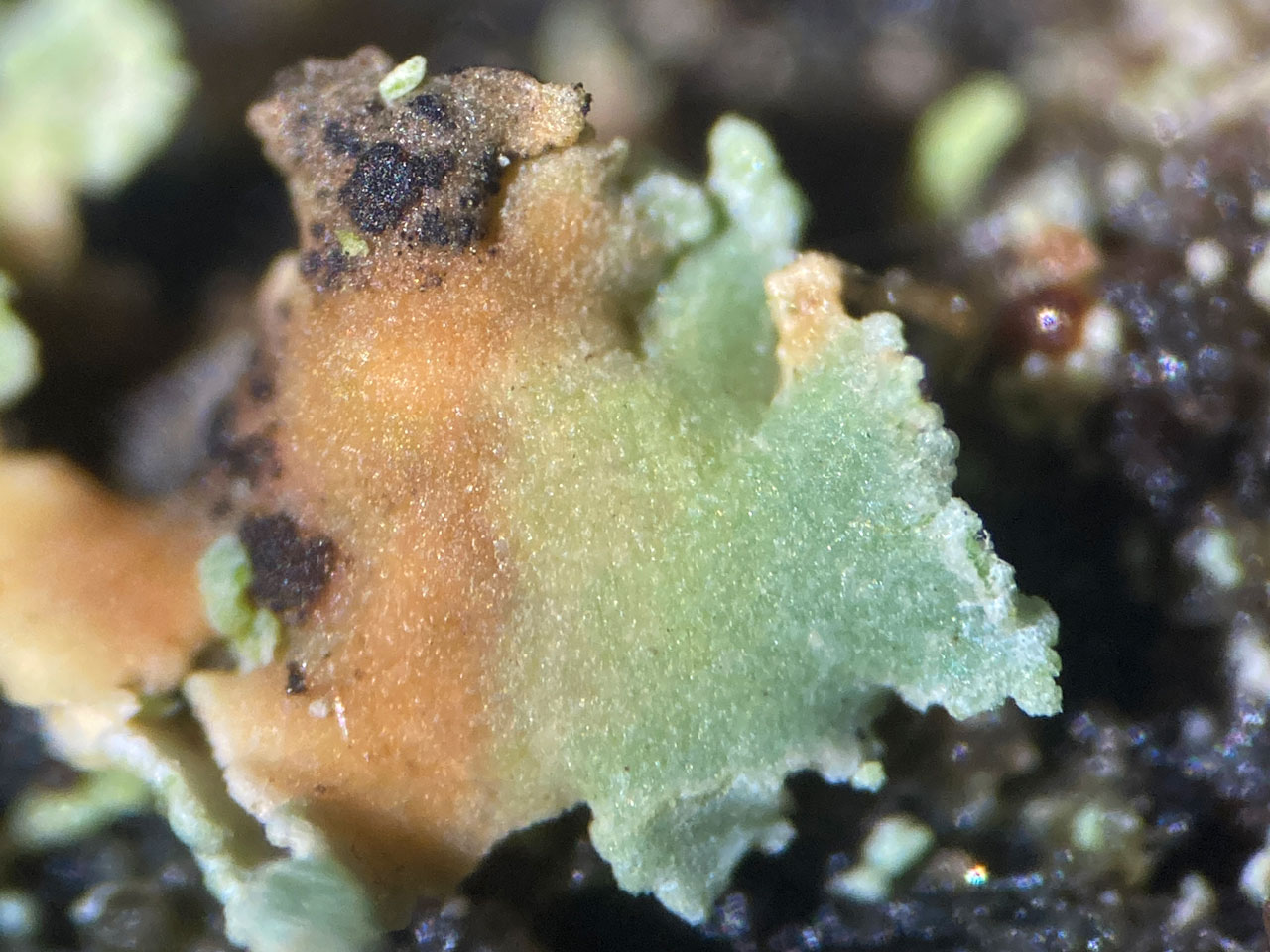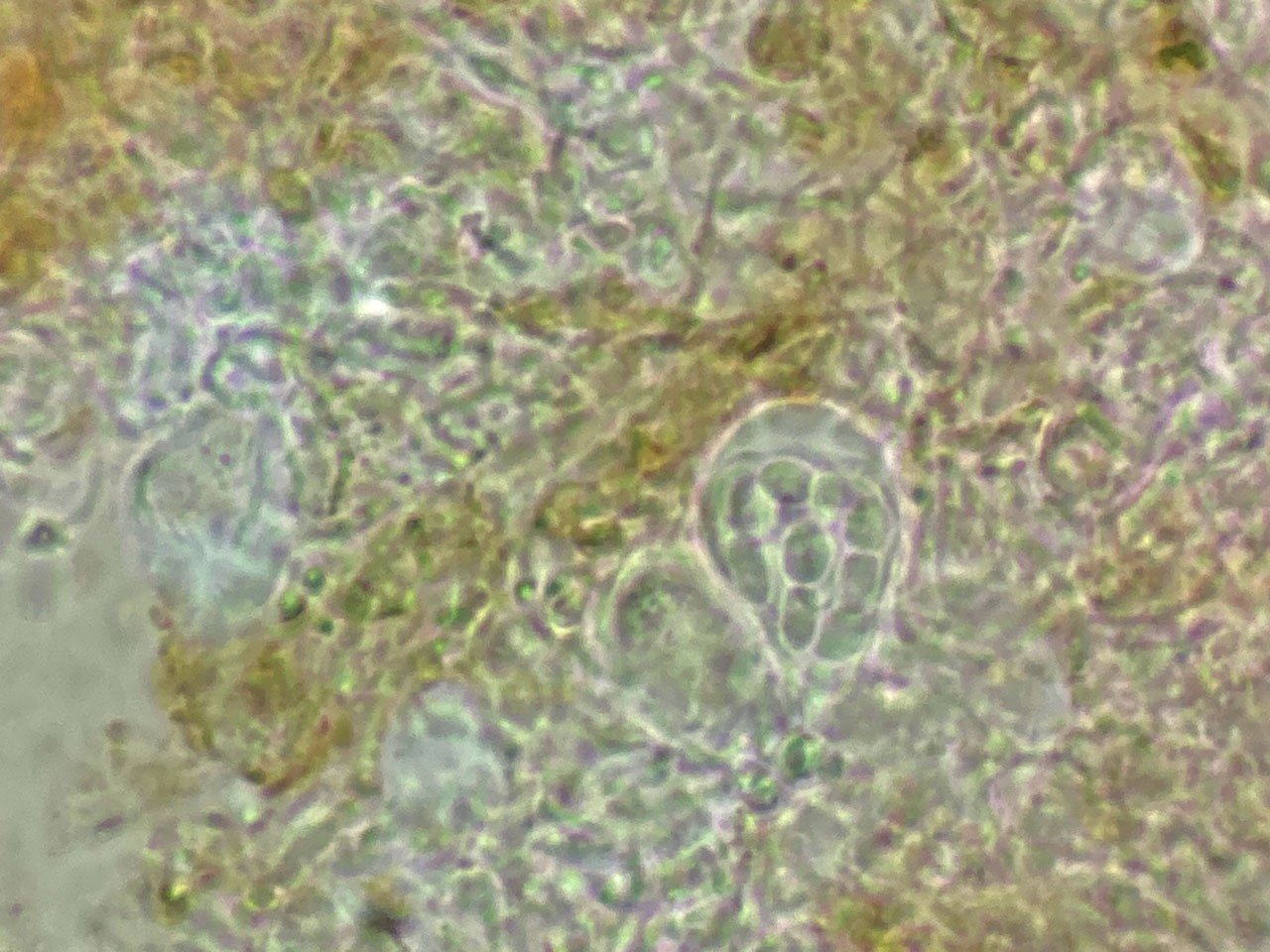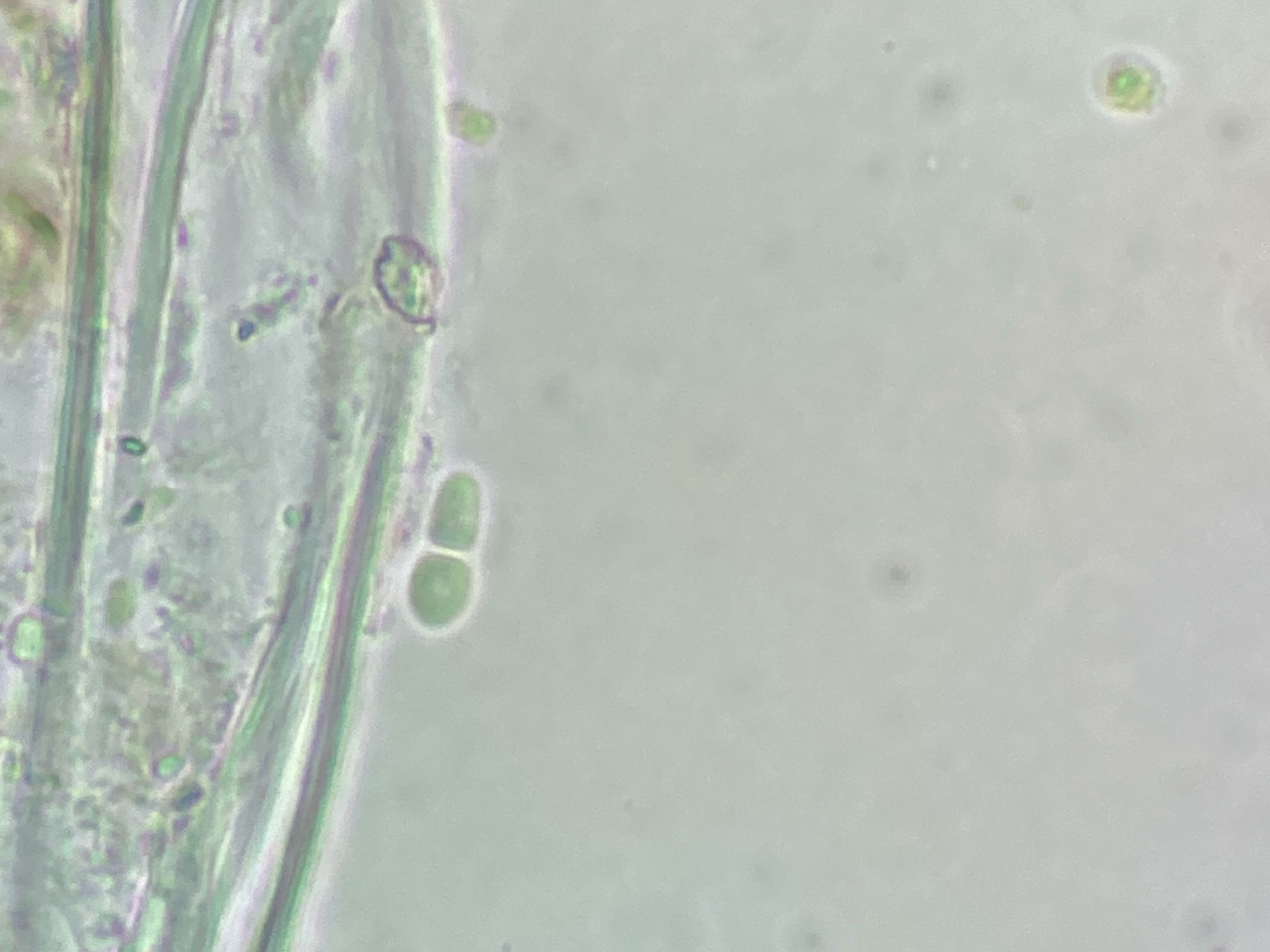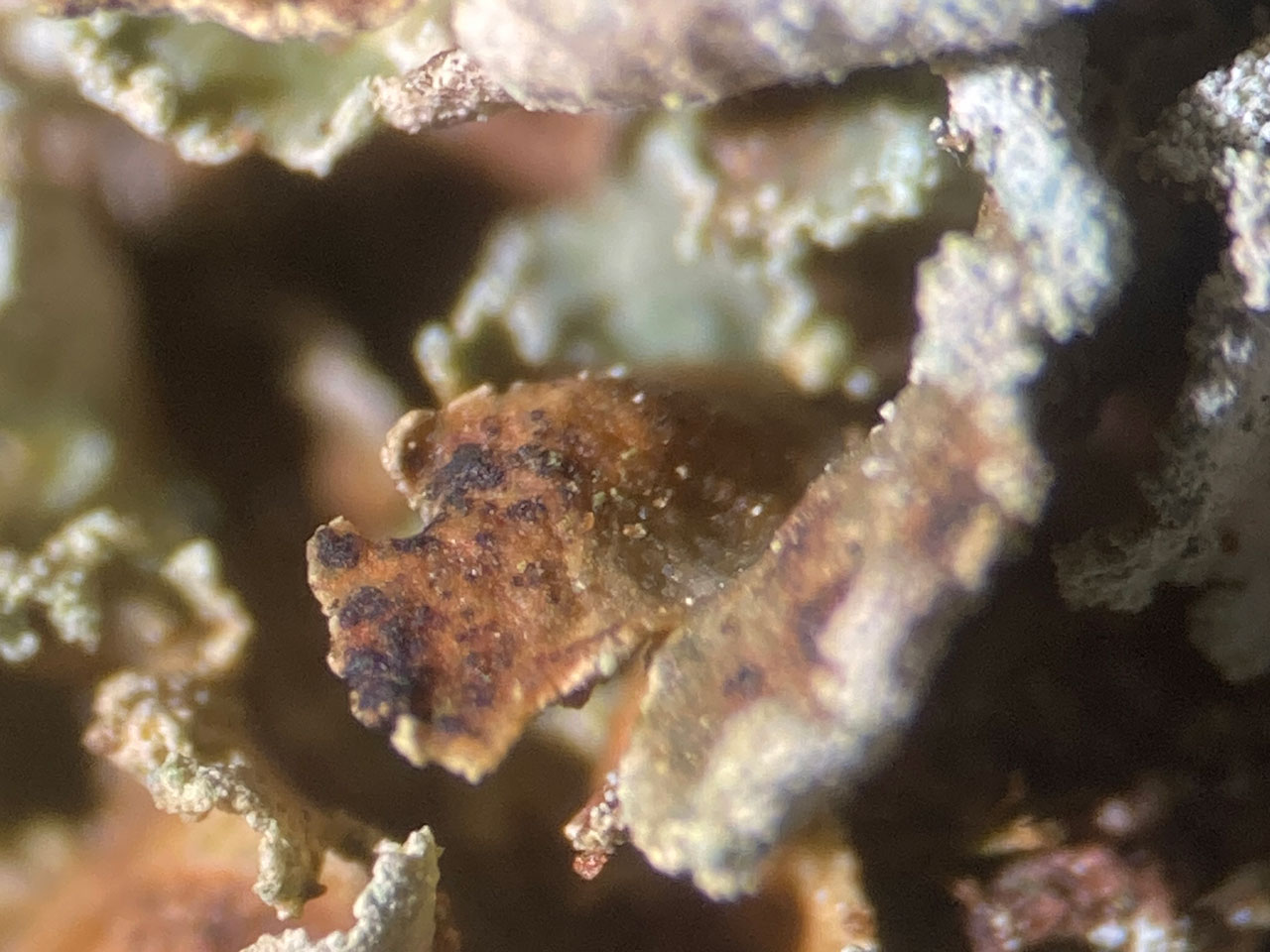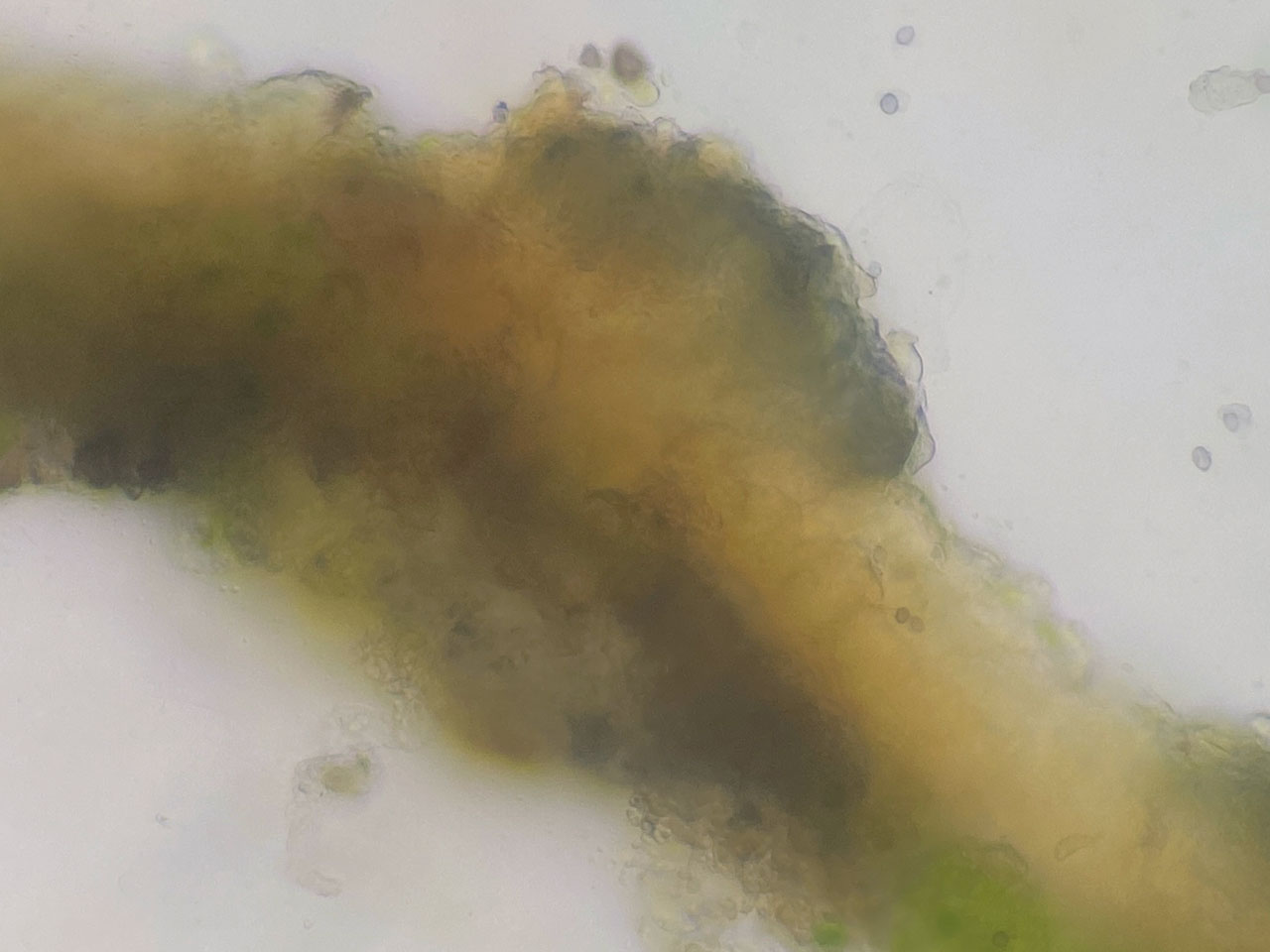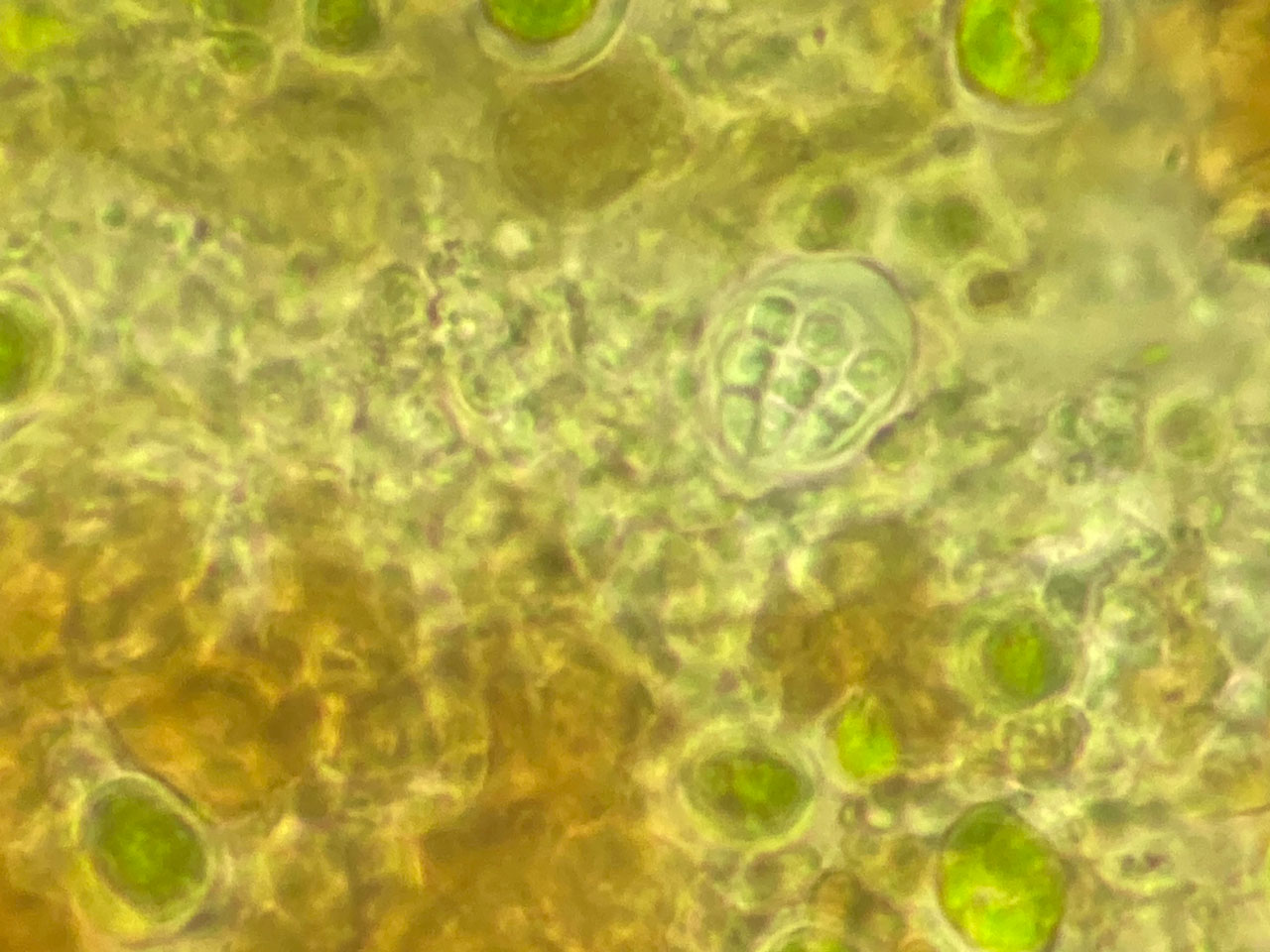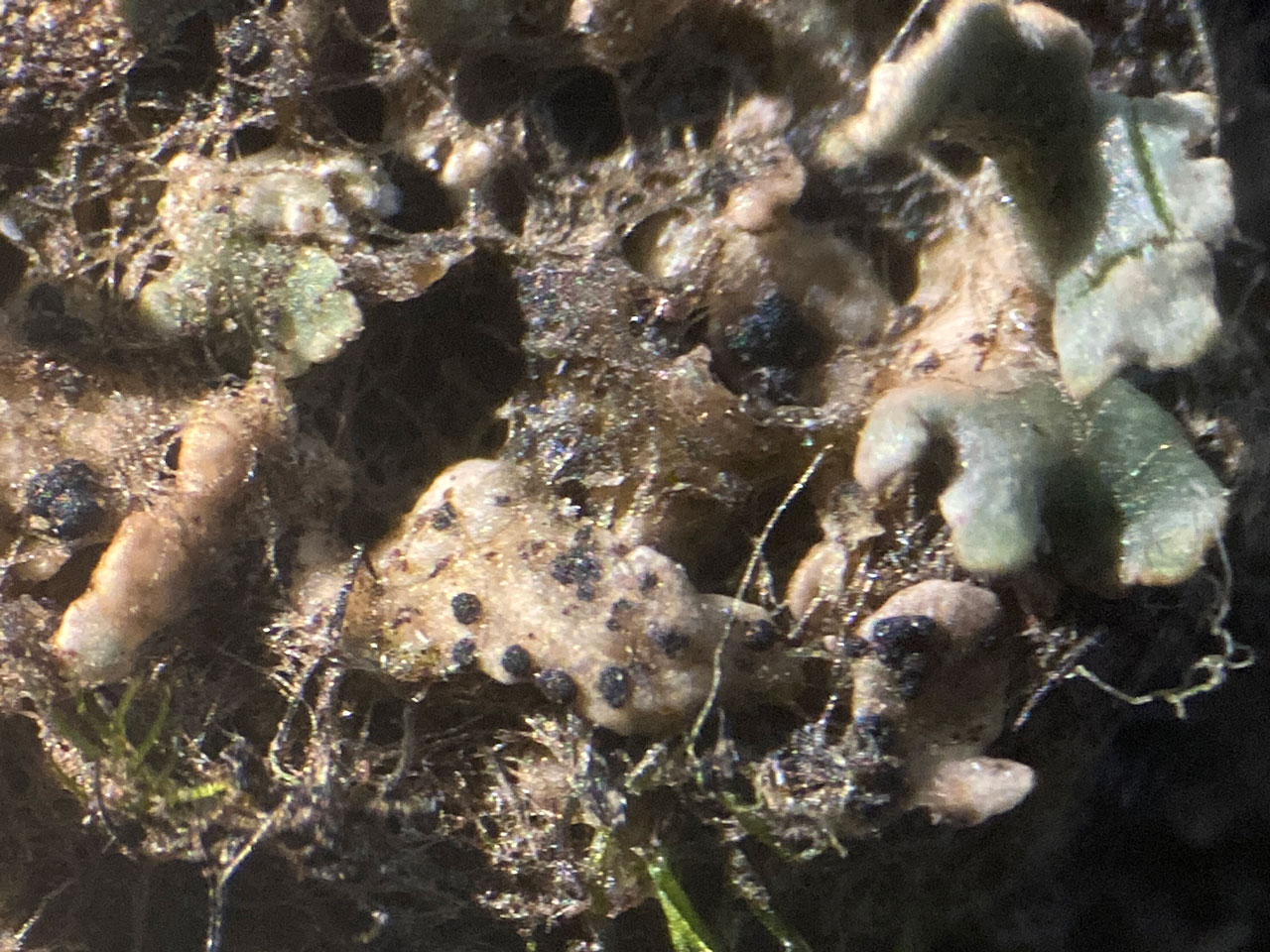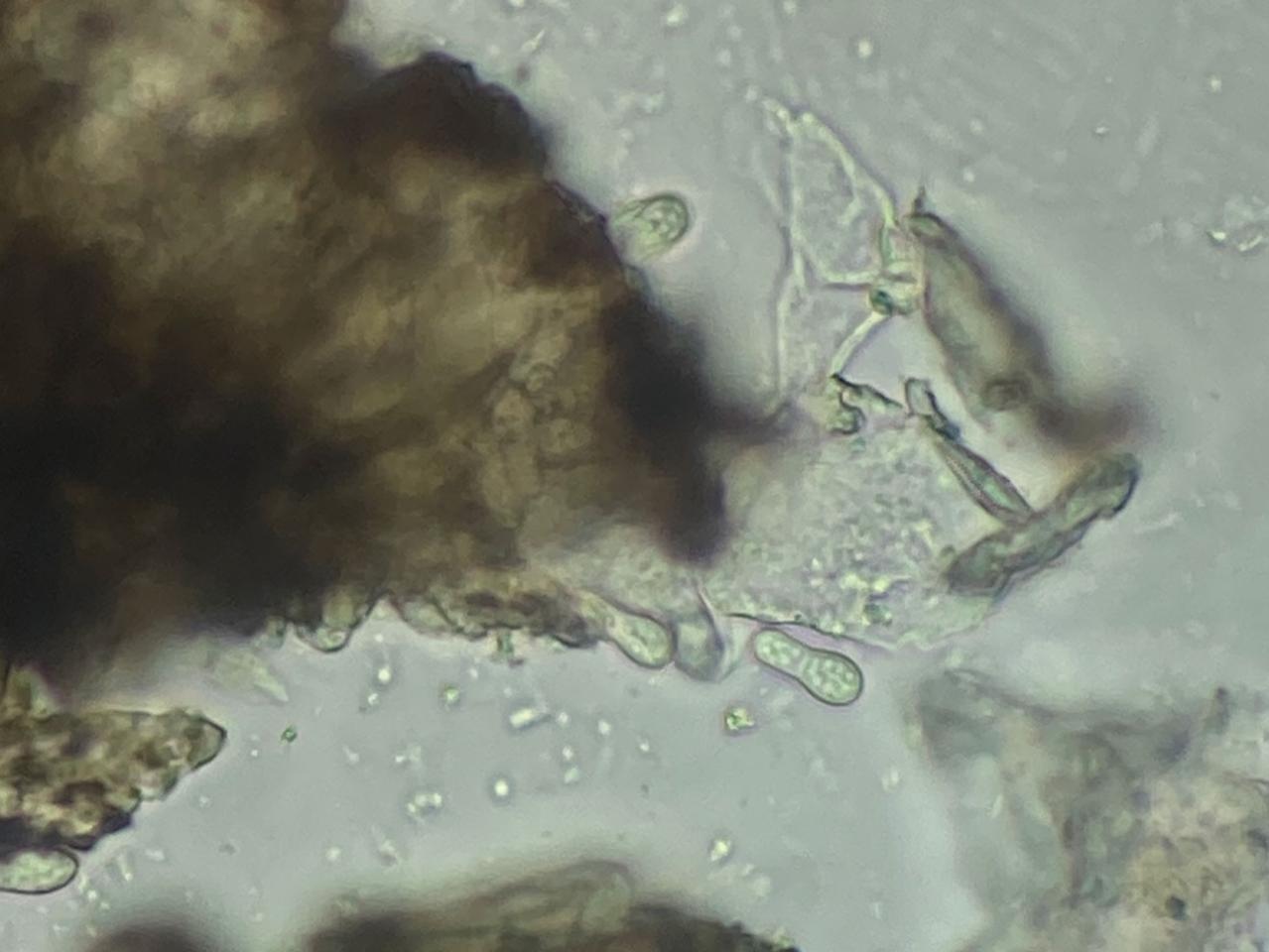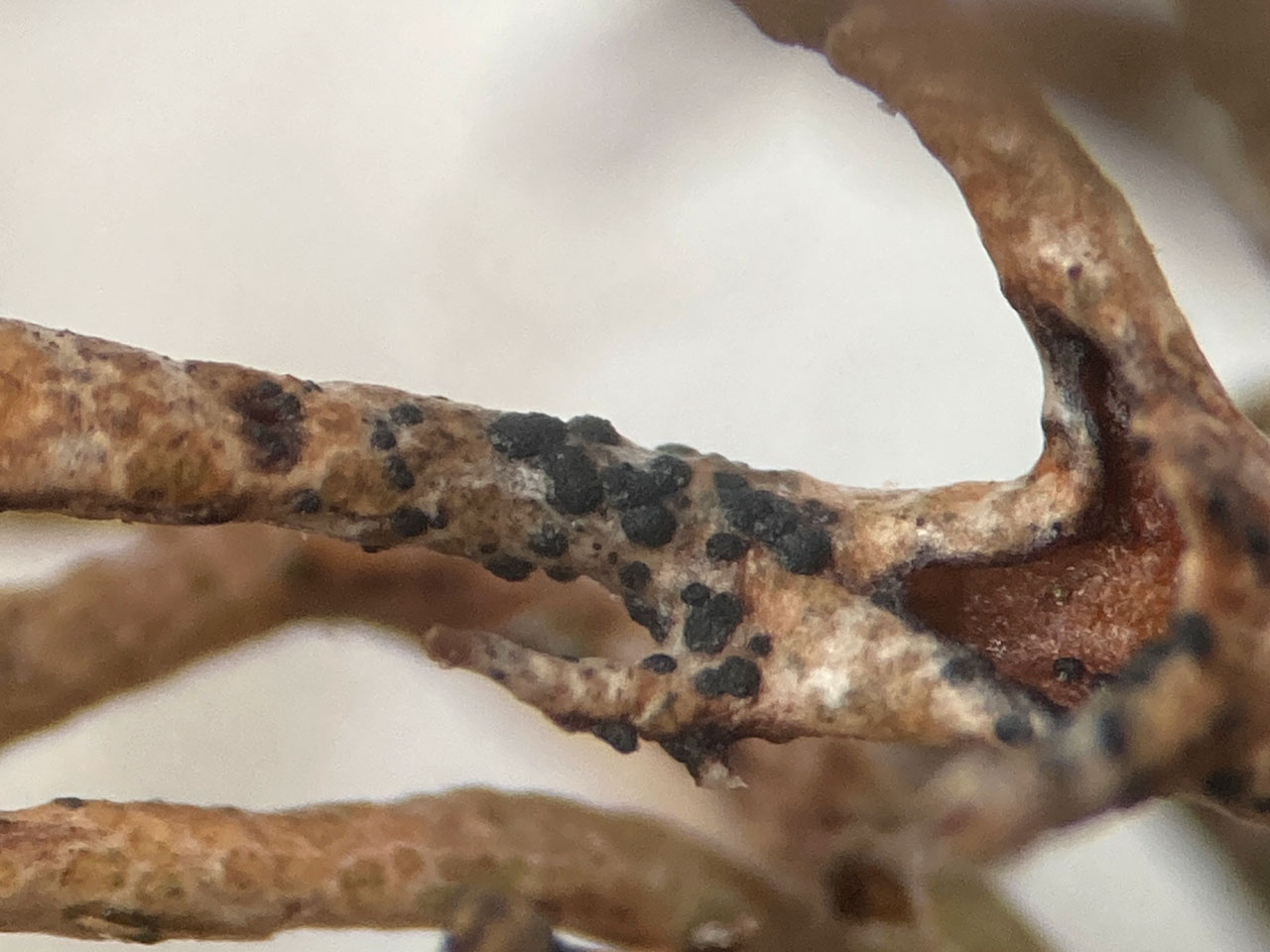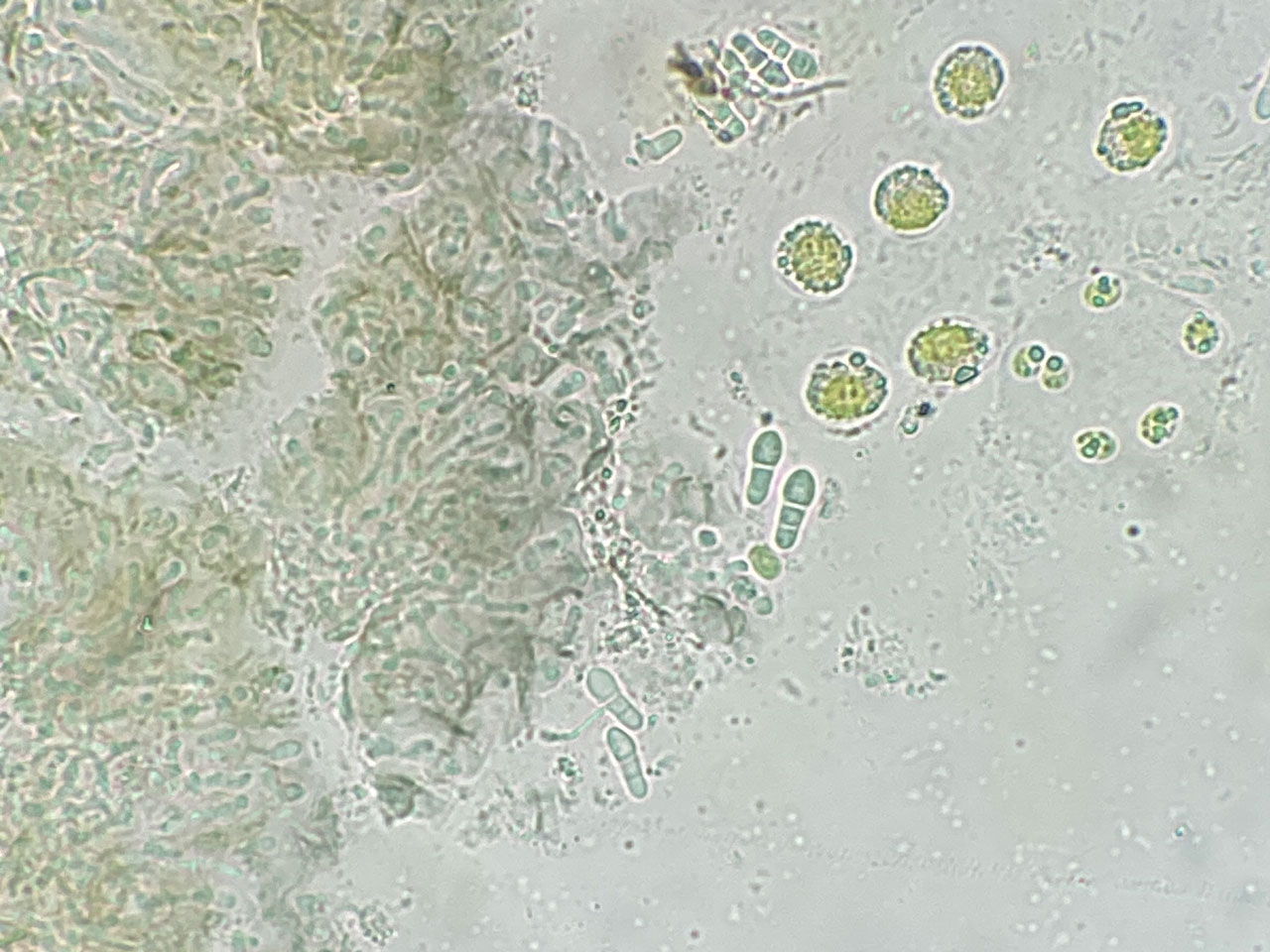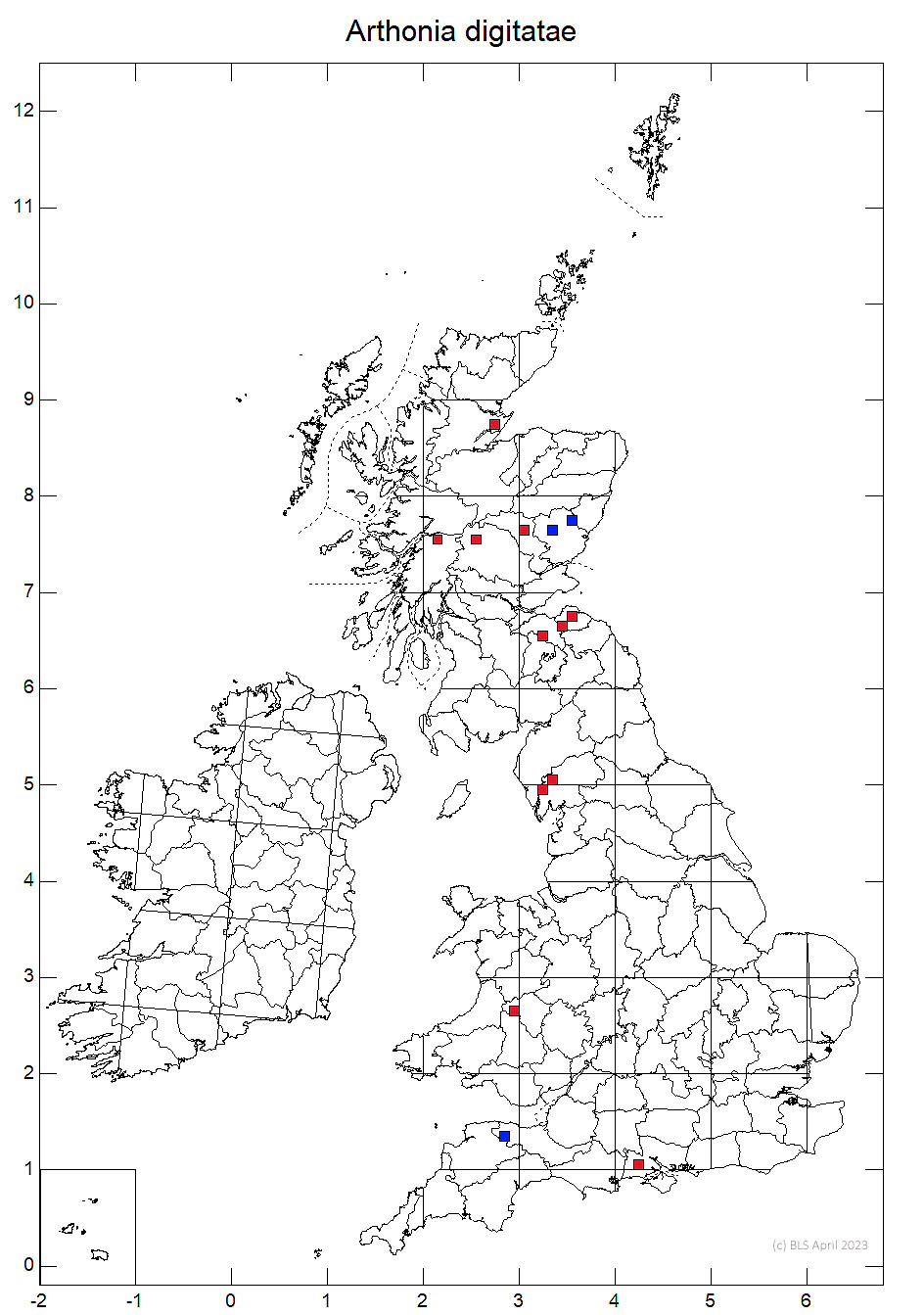Arthonia digitatae
A probably very under recorded lichenicolous fungus, which, however, can be found by searching for clusters of marginless black appothecia on discoloured Cladonia squamules, typically in dense stands of Cladonia polydactyla and Cladonia digitata on large pieces of dead wood in woodland but also recorded from various Cladonia species in heathland.
Thallus absent, lichenicolous, discolouring the host squamules to white or pale red-brown. Apothecia minute, 0.10–0.20 mm diam., irregularly rounded, usually aggregated and sometimes ± confluent, dark brown to black, innate; epithecium dull olive; hymenium varied in pigmentation, the epithecium and hymenium sometimes including scattered granules, hymenial gel I+ pale red, K/I+ blue; hypothecium colourless to straw-coloured; asci broadly clavate, 8-spored, with a K/I+ blue apical ring; paraphysoids anastomosing, olive-brown at the ± thickened and capitate tips. Ascospores colourless, narrowly clavate, 1-septate, 9–11 × 3–4.5 μm (sometimes with 2-septate ascospores, which are longer to 15 × 5 μm, see below), sometimes with a gelatinous perispore. Lichen products not known.
Reported on a broad range of Cladonia species and with a broad geographical range by Zhurbenko & Pino-Bodas (2017). It appears to be rather variable, and a species complex might be involved. The same authors investigated an Arthonia species similar to A. digitatae but with a proportion of ascospores developing more than one septum. It was compared with Abrothallus lepidophilus Anzi (1868) (= Arthonia lepidophila (Anzi) Clauzade, Diederich & Cl. Roux (1989, comb. inval.) but appears to be distinct from that species by its (0-) 2- septate rather than 1- to 3-septate spores, much shorter asci and ascomata without a green pruina. There appears to be no appropriate species placement for A. cf. lepidophila as treated by Zhurbenko & Pino-Bodas, but similar material has been recorded on degraded Cladonia cf. cervicornis from Scotland (W. Inverness, Morvern). Material with spores with two septa has also been collected from Cladonia digitata in the New Forest, Hampshire and from the Lizard Heaths, Cornwall, but this occurred with typical material with one septate spores and was otherwise similar to the one septate form.
Parasitic on Cladonia digitata, C. polydactyla and C. macilenta [the latter may refer to C. polydactyla without cups rather than true C. macilenta] on dead wood; previously known only on C. digitata squamules. Appears generally rare but is locally frequent in the New Forest in old growth woodlands with abundant fallen dead wood. Squamules infected by A. digitatae are also often infected with the conidia of the hyphomycetes Milospium lacoizquetae which is potentially an anamorph of this species. Also found on Cladonia strepsilis in damp heathland in 2023, a very different habitat.

Probably very under recorded but with records from England (Somerset, Hampshire, Cornwall), Scotland (Highlands and S.E. Scotland), Wales (Radnor).
Not assessed but appears local and dependant on large populations of Cladonia species, as found in woods with abandant dead wood, so maybe a Notable species.
Cannon, P., Ertz, D., Frisch, A., Aptroot, A., Chambers, S., Coppins, B. J., Sanderson, N. A., Simkin, J. & Wolseley, P. (2020) Arthoniales: Arthoniaceae, including the genera Arthonia, Arthothelium, Briancoppinsia,Bryostigma, Coniocarpon, Diarthonis, Inoderma, Naevia, Pachnolepia, Reichlingia, Snippocia, Sporodophoron, Synarthonia and Tylophoron. Revisions of British and Irish Lichens 1: 1 - 48
Zhurbenko, M.P. & Pino-Bodas, R. (2017). A revision of lichenicolous fungi growing on Cladonia, mainly from the Northern Hemisphere, with a worldwide key to the known species. Opuscula Philolichenum 16: 188- 266.
Text by Neil Sanderson based on Cannon et al (2020)
